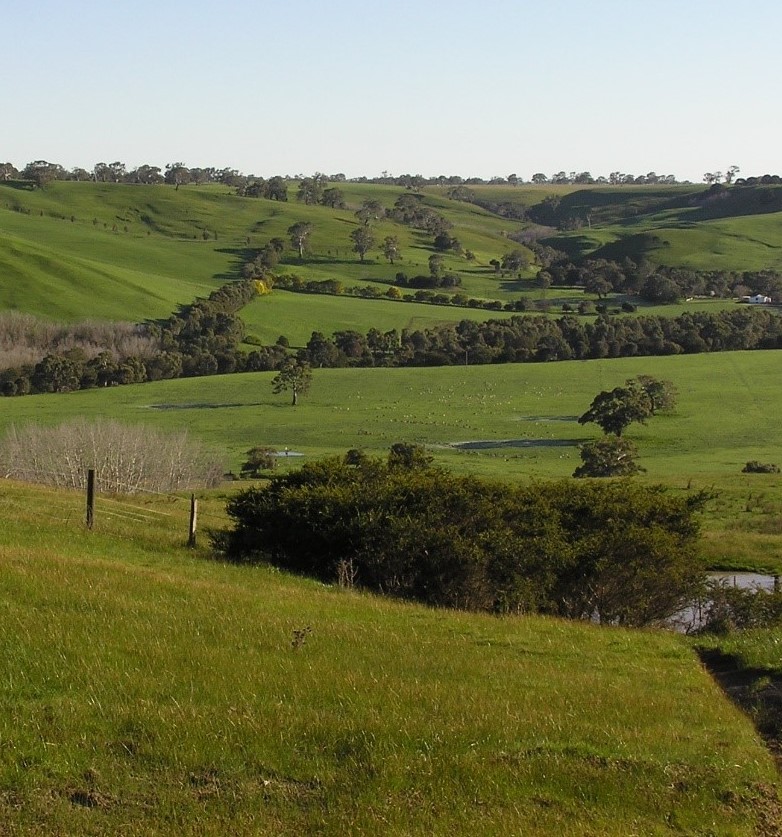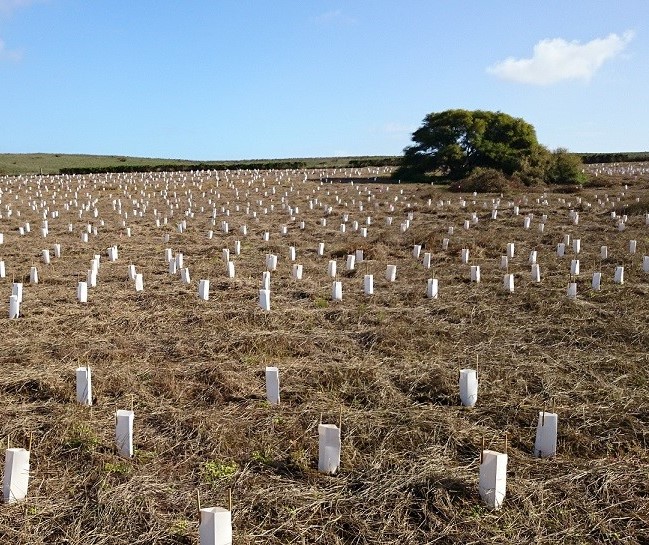Does revegetation work?
Across Australia, landholders, community groups and government agencies are actively carrying out revegetation activities. Whether plantings are for shelterbelts, woodlots or along creeks to reduce erosion, revegetation can provide habitat for native plants and animals, particularly in landscapes that have otherwise been heavily cleared.
In partnership with La Trobe University, several land managers, non-government agencies and community groups, ARI has completed research to understand how revegetation contributes to nature conservation. We asked:
- What are the features of revegetation plantings that most increase their value for animals?
- Which species benefit most from revegetation in rural landscapes?
- Does the conservation value of revegetation change over time as plantings age and mature?
- What is a quick and robust monitoring technique to assess revegetation outcomes (survival, growth) and identify key factors that influence survival?
To answer these questions, we examined bird and butterfly communities in a large field study undertaken in Glenelg Hopkins region of western Victoria during 2019 and 2020. The study repeated bird and habitat surveys at more than 250 of sites surveyed in 2006/07. We surveyed across a range of revegetation types to help us understanding of how the value of revegetation for birds has changed over time.


Revegetation benefits biodiversity
We found that all revegetation activities had broad landscape scale benefits for both birds and butterflies, increasing both the number of species and community complexity. Many benefits of revegetation are realised in the first 15 years after planting, however for some species, such as those that rely on formation of hollows, the benefits will take many more years to emerge.
A monitoring method for land managers
This project also developed a monitoring method to help land managers and community groups to evaluate how well they are achieving revegetation goals. Our monitoring approach focused on the post-summer survival of revegetation which is the most critical time for establishment of plantings.
In 2019/20, we trialled the monitoring method at 65 sites across Victoria. It identified a range of responses across the survey area ranging from very limited planting success to high levels of survival. Unsurprisingly, rainfall and presence of tree guards had a significant influence on plant survival. Species selection was also important.
This research is designed to improve the efficiency of future investment programs and help achieve better conservation outcomes for revegetation activities. This project was funded by the Victorian Government.
For more information contact: tim.obrien@deeca.vic.gov.au
Publications and resources
For more details on this study and its outcomes see the following report, fact sheets and presentation video:
- Jellinek, S., O’Brien, T. and Bennett, A. (2020) Evaluating revegetation outcomes through community based monitoring. (PDF, 1.8 MB) Arthur Rylah Institute for Environmental Research Technical Report Series No. 321. Department of Environment, Land, Water and Planning, Heidelberg, Victoria.
(accessible version (DOCX, 4.0 MB)) - Revegetation in farm landscapes fact sheet 1 - What is the value of revegetation for nature conservation? (PDF, 443.7 KB)
(accessible version (DOCX, 1.8 MB)) - Revegetation in farm landscapes fact sheet 2 - Practical ways to improve revegetation for birds (PDF, 518.0 KB)
(accessible version (DOCX, 1.0 MB)) - Revegetation in farm landscapes fact sheet 3 - How does it contribute to landscape restoration? (PDF, 402.9 KB)
(accessible version (DOCX, 2.0 MB)) - Revegetation in farm landscapes fact sheet 4 - The value of revegetation changes over time (PDF, 470.2 KB)
(accessible version (DOCX, 1.1 MB)) - Revegetation in farm landscapes fact sheet 5 - Butterflies and revegetation (PDF, 426.1 KB)
(accessible version (DOCX, 3.1 MB)) - Revegetation in farm landscapes fact sheet 6 - Recommendations for regional and farm planning (PDF, 418.2 KB)
(accessible version (DOCX, 964.4 KB)) - Revegetation monitoring fact sheet 1 - Using data to make revegetation more effective (PDF, 1.4 MB)
(accessible version (DOCX, 1.9 MB)) - Revegetation monitoring fact sheet 2 - Outcomes of a state-wide monitoring program (PDF, 645.7 KB)
(accessible version (DOCX, 434.3 KB))
The video below titled 'Revegetation benefits for biodiversity' shows a presentation on the project by Tim O'Brien (ARI), Sacha Jellinek and Angie Haslam (La Trobe University). This video is also available via the DEECA YouTube channel.
Page last updated: 04/12/25